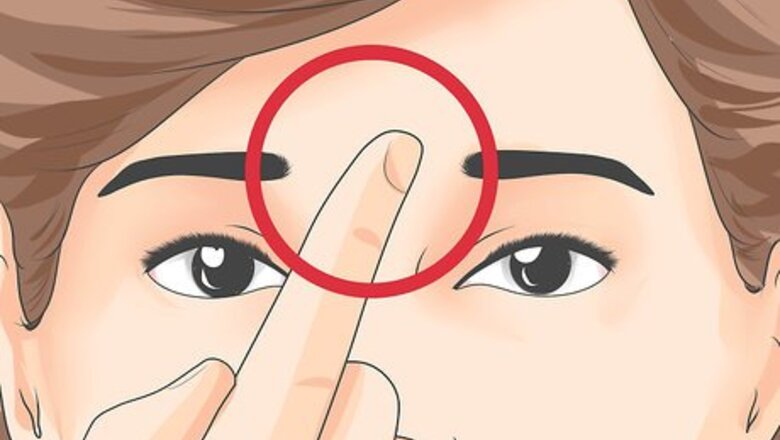
views
Using Acupressure on Your Face
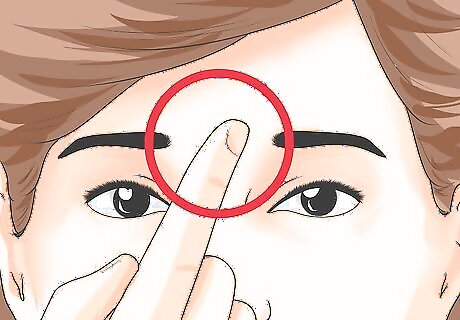
Stimulate the Third Eye Point. Each acupressure point has many different names, those based in its ancient use and the more modern name, which is often a combination of letter and numbers. The Third Eye Point, also called GV 24.5, helps relieve headache and head congestion. This point is found between the eyebrows, where the bridge of the nose connect to your forehead. Press this point with firm, but gentle pressure for one minute. You can try simple pressure or apply a circular motion. See which works best for you.
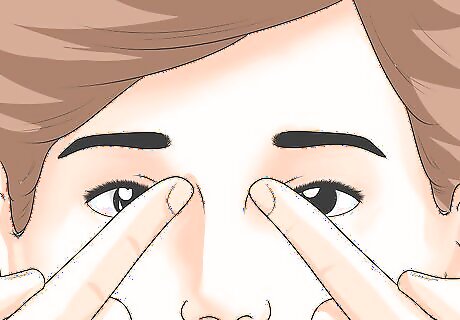
Try Drilling Bamboo. Drilling Bamboo, also called Bright Lights Points or B2, helps headaches that are located more in the front of the head. These pressure points are located at the inner corners of both eyes, just above the eyelid and on the bone surrounding your eye. Use the tops of both your index fingers and apply pressure to both points at the same time for one minute. You can stimulate each side separately if you want. Just make sure to do it for one minute on each side.
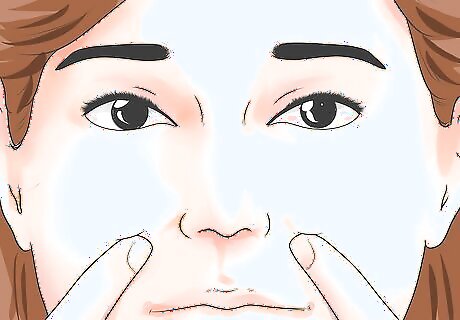
Press Welcome Fragrance. Welcome Fragrance, also called Welcome Perfume and LI20, helps migraine headaches and sinus pain. This point is located on the outer side of each nostril, near the bottom of your cheekbone. Apply a deep, firm pressure or use a circular pressure. Do this for one minute.
Manipulating Pressure Points on Your Head
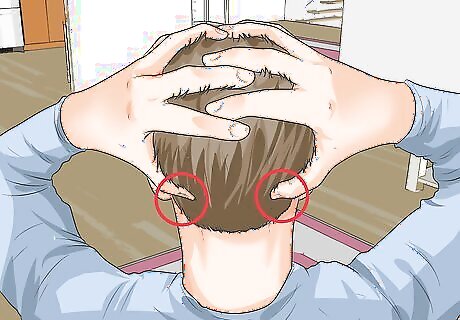
Press Feng Chi. Feng Chi, also called GB20 or the Gates of Consciousness, is a common pressure point used for migraines. GB20 found just below the ear. To find the point, find the two hollows on the sides of the neck at the base of the skull. You can thread your fingers, gently cup your skull with your hands, and place your thumbs in the hollows at the base of the neck. Use your thumbs to massage the point with a deep and firm pressure. Press it for four to five seconds. If you know where the hollows are, you can try massaging them with your index or middle finger, or use your knuckles. Relax and breathe deeply as you massage GB20. You can massage and press this point for up to three minutes.
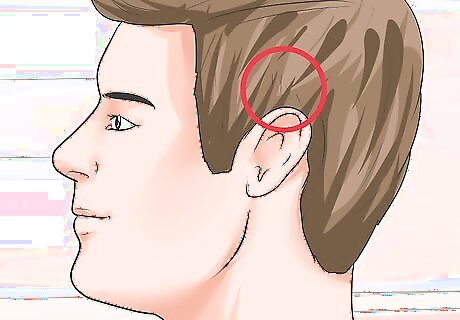
Manipulate the points along your temple region. The temple region features a group of points that curve around the outer ear on your skull. They are located one index finger width from the edge of the outer ear. The first point, Hairline Curve, starts just above the tip of your ear. Each point is one index finger width behind the previous point, curling down and back around the ear. Apply pressure to each point on both sides of the head. You can apply simple pressure or circular pressure for one minute. Stimulate each point right after the previous one for best results. The points are in order from front to back Hairline Curve, Valley Lead, Celestial Hub, Floating White, and Head Portal Yin.
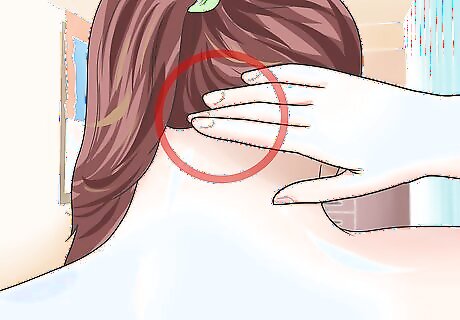
Stimulate Wind Mansion. The Wind Mansion point, also called GV16, helps with migraines, stiff necks, and mental stress. It is located in the center of the back of the head halfway between your ears and spine. Find the hollow under the base of the skull and press into the middle. Put a deep, firm pressure against the point for at least one minute.
Applying Acupressure to Other Parts of the Body
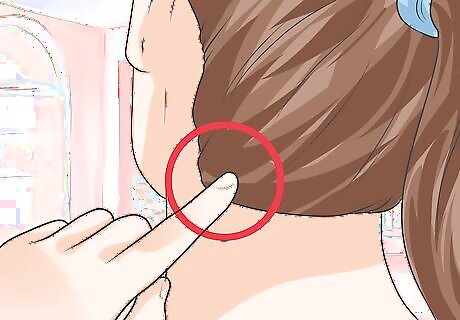
Press on Heaven's Pillar. Heaven's Pillar is located on the neck. You can find it two index finger widths below the base of your skull. Just slide your finger or fingers down from the base or from one of the points located in the hollows. You can find it on the cords of muscle on the side of your spine. Apply simple pressure or circular pressure for one minute.
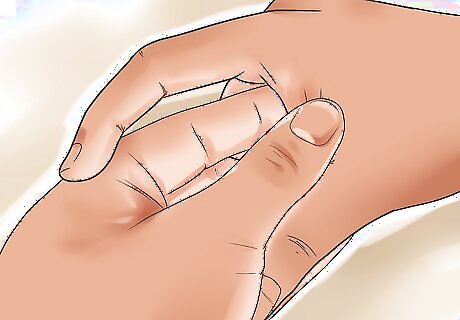
Massage He Gu. He Gu, or Union Valley or LI4, is located in your hands. This point is in the web between your thumb and index finger. Use your left hand to apply pressure to your right LI4 and your right hand to apply pressure to your left LI4. Use a deep, firm pressure to press the point for at least one minute.
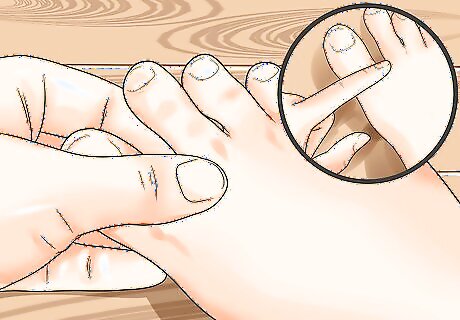
Try Bigger Rushing. Bigger Rushing is another point that is located on your feet just between your big toe and second toe, in between the foot bones. Start at the webbing between your toes and slide back about an inch, so you can feel between the foot bones, to find the point. You can apply simple pressure or circular pressure for one minute. It may be easier for some people to use their thumbs on your feet. This is a good way to stimulate these points.
Understanding Acupressure
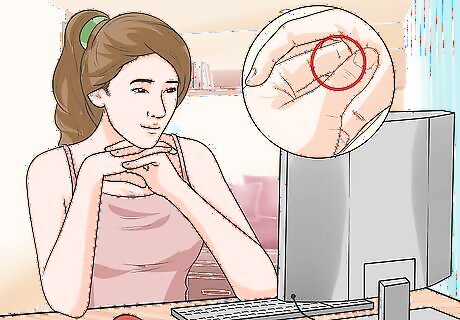
Learn what acupressure is. In Traditional Chinese Medicine (TCM), acupressure is an approach that utilizes various points along 12 basic meridians. These meridians are energy pathways that are believed to carry “qi” or “chi,” which is the Chinese term for life energy. The basic concept in acupressure is that if there is a blockage in qi, illness is a consequence. The application of pressure in acupressure can unblock these energy pathways and restore the easy and unimpeded flow of qi. Acupressure has been shown to benefit migraine headaches in a number of clinical studies.
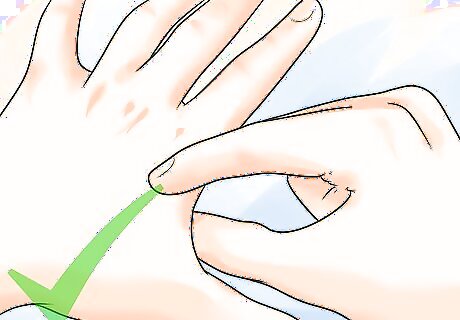
Use the correct amount of pressure. When you do acupressure, you should try to use the right amount of pressure. Press the points with a deep, firm pressure when you stimulate the points. When you press the points, you may feel some soreness or pain, but it shouldn't be unbearable. It should feel somewhere between pain and pleasure. Your overall health determines the amount of pressure you place onto the pressure points. Some pressure points will feel tense when pressed. If at any time you feel extreme or increasing pain, gradually decrease the pressure until you feel a balance between pain and pleasure. You should not try to endure any pain during acupressure. If something feels so painful that it's uncomfortable or excruciating, then stop applying pressure.
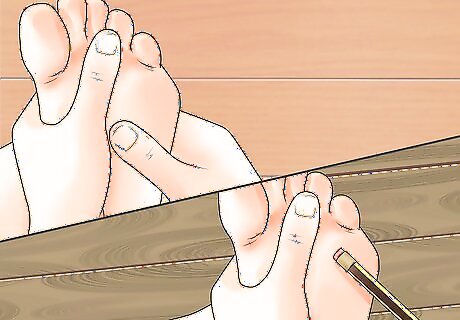
Choose the proper pressing aids. Since acupressure requires the pressing of pressure points, you need to make sure you use the right things to help you press the points. Most commonly, practitioners of acupressure use their fingers to massage and stimulate the pressure points. The middle finger works best to apply pressure to the pressure points. This is because it is the longest and strongest finger. You may also use the thumb. Some smaller, hard-to-reach pressure points can be pressed using a fingernail. Other parts of the body, such as the knuckles, elbows, knees, legs, or feet can also be used. To correctly press a pressure point, you should press with something blunt. For some pressure points, the tip of the finger may be too thick. You can try a pencil eraser for small points. You may also consider using an avocado pit or golf ball.
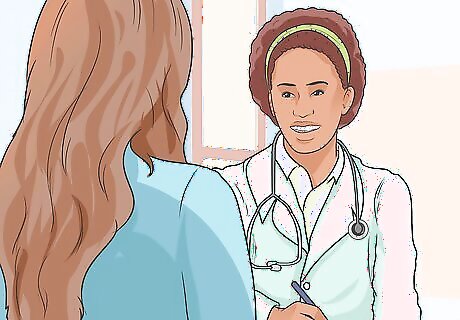
Talk to your doctor about using acupressure. You can try these acupressure points on your own or you can go see an acupressurist or a traditional Chinese medicine doctor. If you decide to try these acupressure points, you should always let your physician know what you are doing to help yourself. These points will not interfere with any medication or any other approach your physician may recommend. If these acupressure points provide relief, make certain you let your physician know. However, make sure to see your physician if these points do not provide relief. Your doctor can also diagnose the underlying problem and tailor an acupressure solution that best meets your needs.
Understanding Headaches
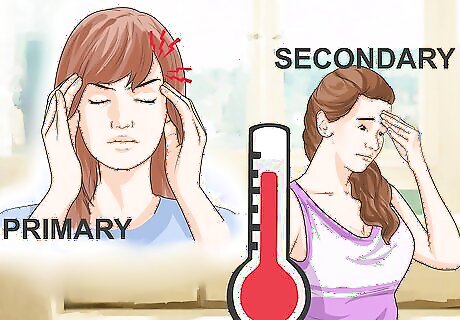
Identify the two different types of headaches. There are two basic types of headaches: a primary headache that is not caused by any other disorders, and a secondary headache that is caused by another disorder. A migraine is a primary headache. Other types of primary headaches include tension headaches and cluster headaches. A secondary headache can be caused by strokes, very high blood pressure, fever, or a problem in the TMJ (Temporomandibular Joint).
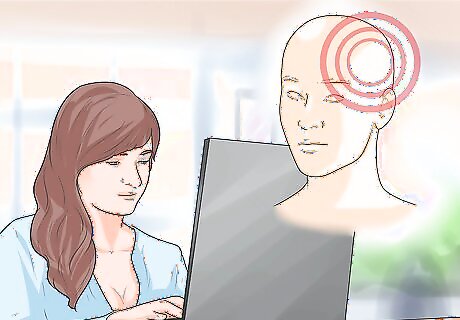
Recognize the symptoms of migraines. Migraine headaches generally are only on one side of the head. Most commonly, they occur at the forehead or the temples. The pain can be moderate to very severe and may be preceded by an aura. Most people with migraines also get nauseous, are sensitive to light, odors, and sounds. Moving around generally makes the headache worse. An aura is a temporary disturbance in how you process environmental information. Auras may be visual, like flashing lights, blinking lights, or zigzags of light, or they may be the detection of smells. Other auras may be numbness that marches up either arm, speech disturbances, or confusion. About 25% of people with migraines also have auras. Migraines can be triggered by all sorts of things and vary from one person to another. Potential triggers include red wine, missing meals or fasting, environmental stimuli such as flashing lights or strong odors, changes in weather, lack of sleep, stress, hormonal factors, particularly a woman's period, certain foods, head trauma including traumatic brain injury, neck pain, and TMJ dysfunction.
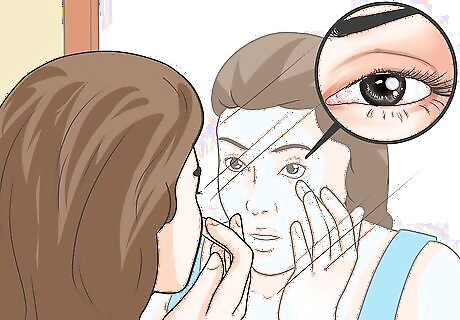
Recognize the red flags for headache medical emergencies. Headaches of any kind should always be evaluated by a physician. In some situations, a headache may signal a medical emergency. The red flags for medical emergencies are: A severe headache that occurs along with a fever and a stiff neck. This might be a sign of meningitis. A thunderclap headache. This is a sudden and very severe headache that can signal a subarachnoid hemorrhage, which is bleeding under the tissue that covers the brain and spinal cord. Tenderness, with sometimes a pulsating blood vessel, at the temple. This can, especially in older people who have lost weight, signal a condition called giant cell arteritis Reddened eyes and seeing halos around lights. This can be a sign of glaucoma, which if left untreated can lead to permanent blindness Sudden or severe headaches in people with cancer or a weakened immune system, like post-transplant patients and those with HIV-AIDS.
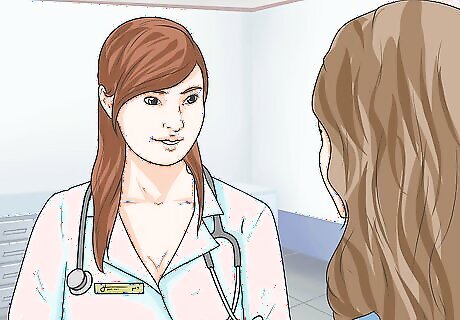
See your physician. Headaches can be symptoms of very serious conditions. You should go see your doctor to determine if you have a problem with primary headaches or a secondary condition that causes headaches. If you meet one or more of the following conditions, make certain you see a physician within a day or two, but no later: Headaches that occur with increasing frequency or severity Headaches that begin after the age of 50 Changes in vision Weight loss
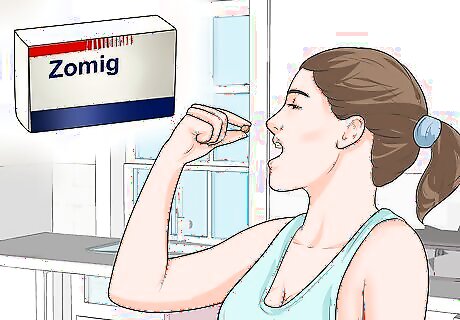
Treat migraines medically. Medical treatment for migraines include the determination and elimination of triggers, along with managing stress and treatment. In severe cases, doctors may prescribe medications such as triptans (Sumatriptna/Imatrex or Zolmitriptan/Zomig), dihydroergotamine (Migranal), and a drug to control nausea and vomiting, if these are present. Triptans and dihydroergotamine cannot be used in people with coronary artery disease or uncontrolled high blood pressure and must be used cautiously in elderly patients or those with cardiovascular risk factors, including obesity, high levels of LDL cholesterol or triglycerides, or who have been diagnosed with diabetes.




















Comments
0 comment